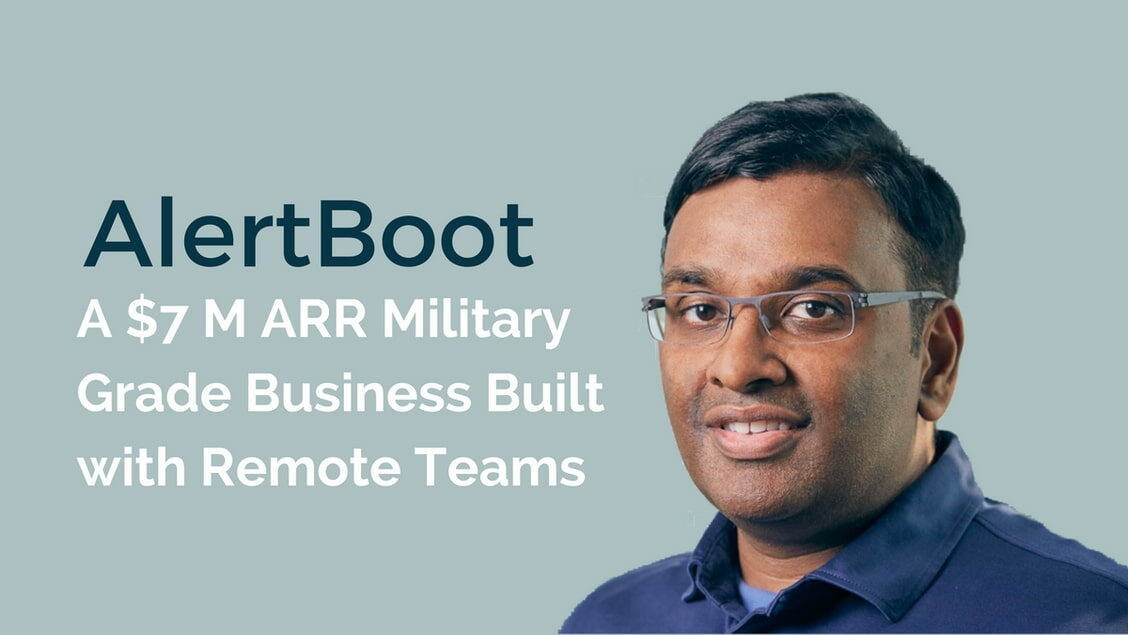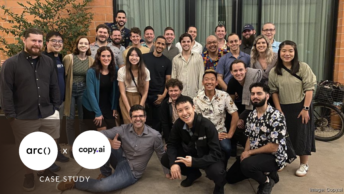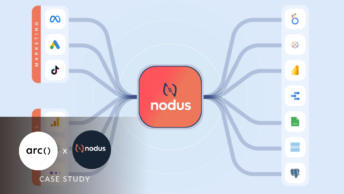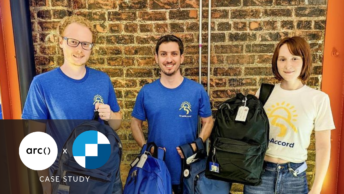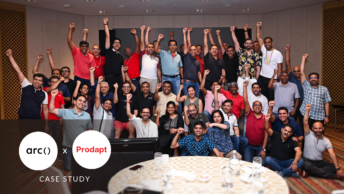You might be surprised to learn that the complex file encryption software used by organizations like the Department of Defense is not developed in some government laboratory, but by contract development teams and freelance programmers distributed across the globe.
Even with clients like banks, government agencies, hospitals, and law firms, AlertBoot is able to build secure encryption software with remote developers. We interviewed AlertBoot’s founder and CEO, Tim Maliyil, to find out how he used a distributed model to help his company reach $7 Million Annual Recurring Revenue.
With AlertBoot now encrypting over 400,000 devices, Tim shared with us the lessons he’s learned through founding two SaaS business — namely, how to effectively manage distributed teams, keep contract engineers motivated, and ensure product quality.
Looking for top talent fast? See how Arc can help you:
⚡️ Find developers, designers, marketers, and more
⚡️ Freelance or full-time remote + fully vetted
⚡️ Save up to 80% with global hires
Hire top talent with Arc risk-free →
AlertBoot Beginnings
Armed with some key lessons, human resources, IP, and capital from a successful partial exit from his first SaaS, Tim launched AlertBoot as a semi-distributed company in 2009.
From attempts to scale operations with remote developers during his first business, Tim learned it’s not enough to just recruit the right talent overseas.
“We learned from the challenges and overcame the hurdles of how to manage a remote team with that first business. In 2006, we started scaling up our outsourcing arrangement. We had tried it prior to that, but we didn’t have a man on the ground overseas — [someone] in the same time zone and culture who could travel to the office.”
Once Tim brought on direct hires to manage overseas contractors, he discovered the utility of remote engineering teams.
Hiring Remote Engineers
Part of Tim’s formula is to find and hire senior engineers overseas to serve in a CTO role. Once the right person is onboard, they are flown to headquarters in the United States where they spend several months learning the product and the business. They then go back to oversee the team abroad.
Once in place, Tim works with the senior engineer to build up the local contract development team. “I do a lot of the initial screening myself. I try to make a point of seeing if I can communicate with them.” Ease and clarity of communication are vital to productive workflows, especially among distributed engineering teams.
In addition to communication ability and technical skill, it’s important that the engineers are able to understand the product from a business perspective:
I need people who are able to understand the business need for the product. Some engineers get caught up in their work and think they can solve the world’s problems, and just take things too far. If they are able to understand the business need, they will be more proficient as engineers executing our goal.
Tim Maliyil, AlertBoot founder and CEO
Hiring developers that understand the business end comes down to efficiency and building the product right. Engineers should understand the product, the related regulations, and the specific pain points customers expect the product to solve for them. If you end up working with developers who are unable understand these things, or are unable to align their work with your business objectives, they might not build what you need. This will cost you time, money, and quality, or, most likely, all of the above.
With the right contract developers brought onboard, AlertBoot’s human resources situation is highly agile — some engineers work only part-time on short-term projects while others stay on for several years or become full-time hires as needed.
Read More: On-Site vs Remote vs Distributed Engineering Teams: How to Choose?
Scaling With Freelance Talent
“We are not big enough that we need a full-time graphic designer or full-time high-end C++ engineer — we don’t have enough work to keep them busy,” says Tim.
That’s why AlertBoot turns to freelance platforms when they need to add new functionality, require certain expertise ahead of product launches, or need general part-time consultants.
With a highly complex file encryption product, AlertBoot needs to hire experienced developers at the top of their field. “The tech is so complex that sometimes you may need a Ph.D. to work on it,” Tim says. Recruiting this caliber of talent for short-term projects can be extremely difficult, especially if you don’t have an astronomical budget.
You can find this type of talent in the U.S., but they may ask for 40-50k per month. Instead, Tim used online talent sourcing to find the right people for the job while cutting costs.
“Math education and the cyber skillset are pretty strong in, for instance, Germany, and Western Europe. We hired a small team in Germany led by a CTO there. At 20K per month, he is still not cheap, but this was a key person to help make the product bulletproof.”
Keeping Remote Engineers Motivated
Keeping remote engineers engaged and performing to their potential is also very important for successful product development. As mentioned earlier, to build their encryption software, AlertBoot has to contract some crème de la crème engineers.
“What matters most to this type of engineer,” Tim explains, “is that their mind is always piqued, their intellect challenged, and that they are always learning.” It just so happens that working out the most secure code to protect the data of governments, law firms, and other sensitive information tends to provide a natural drive.
However, you shouldn’t only rely on the developer’s love of learning and programming to solve problems. People instinctively want to receive feedback and validation to find value in the work they do.
“They have to find a purpose in what they are doing,” Tim tells us, “so I make it a point to share some war stories from the field on a weekly basis.” As a hands-on CEO, Tim regularly does sales demos and keeps abreast of incoming support issues. Being technical himself, he can bring specific feedback to the engineering teams on customer requirements, customer integration, complaints, and other support updates.
While engineering teams need to hear constructive feedback so they can perfect the product, it’s also important to share wins. After a successful beta trial with a (foreign) government agency, Tim shares the response with the team:
“The reaction was very enthusiastic from not-so-enthusiastic folks (government bureaucrats). I can bring that back to the team and let them know — what we are building, the ideas we had, they are tangible and they are needed.”
This is great feedback to get during product development and proves to the team the value of what they are building. Sharing market validation, customer feedback, and customer success helps remote engineers feel like they are part of the product improvement process and keeps them engaged in their work.
Read More: 31 Y Combinator Application Tips to Successfully Snag a YC Spot
Separation for Security
As an information security company catering to banks and government agencies, it is necessary to separate codesets during product development. Distributed teams operating independently is a natural solution.
It may seem counterintuitive, but using contract developers in remote locations actually results in more secure software. Tim explains why it makes perfect sense:
“The guys who build our encryption code have no idea what our web services or APIs look like, and the guys who build the APIs have no idea what the encryption looks like — or even have access to it.”
For these two product segments, there is limited-to-no cooperation between teams. “From a security perspective, it’s a way to ensure a low likelihood of any security breaches from our staff.” When designing an information security product for organizations trusted not only to keep information safe, but to keep us safe, this is a pretty important point.
Of course, teams don’t always work in isolation. There are times when cross-team collaboration is more important than others. When bigger projects are underway, or new features are being integrated, team collaboration will be key.
“If it’s for the core of the product, it’s good if the team is together. You get those brainstorming sessions and those “aha” moments that push product development forward,” says Tim.
Read More: How to Manage Developers on a Remote Engineering Team (6 Tips)
Why the Distributed Model Works for AlertBoot
With team members in Seoul, Sydney, South Asia, the U.S, and Germany, AlertBoot is a truly distributed company.
Tim engages his remote teams by staying in constant contact. “Unless I’m sleeping, I’m pretty much available. Just ping me on Skype.” Key managers spend time at headquarters or meet up with Tim in Singapore, Taipei, or wherever he may be traveling. He keeps in touch with the rest of the team via frequent video conferences.
When we asked him why he chose this model to build his company, he cites the ability to be “agile” and “cost-effective.”
We are not wasting money on office space, and we are not pinning ourselves down to a certain geography, or the related limitations of a talent pool within that given geography. Second, it has allowed us to find talent when we need it, wherever it’s available.
Tim Maliyil, AlertBoot founder and CEO
Tim even connects his product’s quality with the flexible hiring and team structure that a distributed model allows. He argues that top engineers are sharpest when tackling new problems, before the work becomes mundane and stale. For AlertBoot, this has been one of the benefits of working with contract developers and freelancers.
The distributed model also enables the team to be more responsive to customer needs. “I end my day escalating issues to engineering, who is then working on it overnight. For small issues, we can turn it around in a day or two,” Tim tells us. In this manner, work can be passed off between time zones — and no one is pulling an all-nighter.
Read More: Freelance Web Developer vs Dev Agency: Which is Best for My Project?
Advice to Other Founders
Although AlertBoot has successfully made use of distributed teams, contractors, and freelance developers, Tim recognizes the risk of outsourcing product development. When building a new business, understanding the technology and product ownership should not be underestimated.
That’s why Tim encourages other founders to either know the tech behind their business or find a partner who does. “You need a technical co-founder to understand both the business and the tech technology — if that’s not you.”
“If you hire an overseas shop, you are putting too much faith in a stranger to design the product properly. You can’t always trust third parties to build certain parts of your product — they may just not know the business.”
Tim also shared the hard-learned lesson of building with scalability in mind. With his first business, after his product started gaining traction and the user base began to grow, he found that certain product components were built inefficiently.
This resulted in exorbitant server fees. He, therefore, had to invest heavily in rebuilding those components to scale down their server footprint and reduce costs in the long run. While cloud computing and AWS reduces hosting costs, building smart is always the way to go.
If you plan to be successful and grow, which you probably do, Tim offers this advice: “Build from the very beginning with scalability in mind — this will lead to a more linear cost base as you grow.”
Read More: How Data Science Managers Can Effectively Lead the Team to Production
A Growth Trajectory for AlertBoot
Tim is on a mission to bring his bootstrapped company to 20 million in revenue, organically, before he considers an exit. With some potential big-name customers already expressing interest in a next-generation beta product, things are looking promising.
Successfully using distributed teams takes careful planning, intentional communication, and synchronized objectives, underwritten by trust. Still, the distributed model may not be right for every business venture.
For Tim and AlertBoot, the benefits are clear: “remote dev teams have allowed us to be very agile and responsive to our customer needs — not to mention cost-efficient.”
You can also try Arc, your shortcut to the world’s best remote talent:
⚡️ Access 450,000 top developers, designers, and marketers
⚡️ Vetted and ready to interview
⚡️ Freelance or full-time


